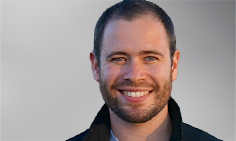THE due-date for the United Nation’s Millennium Development Goals is fast approaching and, perhaps because they’re unlikely to all be met, the emphasis has shifted to the post-2015 agenda.
As an optimist, I think this is an exciting and important time for human health and, more specifically, for safe surgery and anaesthesia.
Health is a star-player in the MDG lineup. Three of the eight goals are directly related to health.
Years ago, maternal and child health experts made policymakers take notice of them. They were so successful that children’s and women’s health were given high global priority in MDG 4 and 5. Communicable disease specialists were similarly successful with MDG 6.
So how did they do it?
The answer lies not in their charisma or communication skills, although I’m sure they have these. The answer lies in data — cold, hard, boring data.
In the world of health policy, without data there is no problem and without a problem, there is no action.
Armed with maternal and infant mortality rates (MMR and IMR), the experts were able to clearly demonstrate unmet need and poor outcomes in women’s and children’s health. MMR and IMR are crude but they clarify the problem for policymakers.
As the global burden of disease shifts from communicable to non-communicable diseases, the challenge of providing safe surgery and anaesthesia has emerged as a public health crisis of enormous scale.
However, there is a considerable lack of quality data describing unmet surgical need to either inform or motivate policymakers. No data. No problem. No action.
The perioperative mortality rate has been proposed as the surgical equivalent of the MMR. It’s been defined as all-cause mortality within 24 hours of surgery, divided by total interventions performed. It is a broad, non-specific measure of death.
Death in surgery, like in maternal and child health, is a crude but useful benchmark — more a broadsword than a scalpel, if you’ll pardon the pun. It is, however, a solid starting point for solving the problem of unmet surgical need and, let’s be clear, there is a massive need.
What little data we do have show that 2 billion people in the world have no access to basic surgical care or anaesthesia — of any kind — let alone safe surgery or anaesthesia.
This is a conservative estimate.
Surgery is needed to treat a vast array of conditions. However, obstetric emergencies, trauma and some cancers represent the bulk of the burden.
Looking at cancer alone, there are about 7.6 million annual deaths worldwide — which is a little more than the entire population of NSW and, incidentally, more than the mortality of malaria, tuberculosis and HIV combined. Many of these deaths are preventable, often with straightforward and cost-effective surgery like mastectomy.
As with most burdens of disease, the lion’s share is shouldered by people in low-income countries. In sub-Saharan Africa, for example, it’s estimated that 56 million people need surgery today — and we think we have a waiting list problem.
Closer to home, in the Pacific and much of South-East Asia, the picture of surgical and anaesthetic care is particularly bleak.
Unfortunately, this doesn’t count for much at all without reliable data, but 2013 is the year to get it. It is, at the very least, the year to collect enough data to convince the World Health Organization that alleviating the global surgical burden is worth the effort.
This year, Australia has the honour of chairing the executive board of the World Health Assembly, which is the supreme decision-making body of the WHO.
However, when it comes to providing the international aid dollars that might go towards improving surgical safety in the countries where it is needed, our new federal government hasn’t started well.
With AusAID “reintegrated” into the Department of Foreign Affairs and cuts of $4.5 billion in international aid, it’s hard to stay optimistic.
But with any change comes opportunity. In this case, it is a chance to engage with our new government and encourage it to look to a future where safe surgery isn’t something only for us.
With the right data, our parliamentarians might see value in taking the knife to something other than the aid budget.
Dr Simon Hendel is an anaesthesia fellow, an associate of the Centre for International Health at the Burnet Institute and an intern at the Global Surgical Consortium. He is currently based in Fiji working as an Australian Society of Anaesthetists Pacific fellow.

 more_vert
more_vert
I appreciate Simon’s idealism however on the ground here in Sub-Saharan Africa we are going to fall well short of the MDG’s. Because of a culture of blame there is great resistance to the collection of outcome data or any audit process. When confronted with clear information about infection control or international standards there is an overwhelming inability and/or apathy in taking the appropriate action. Only when we have worked out how to change the underlying attitudes are we likely to see any progress in these vital areas of global health. This will take time however given enough resources is an achievable goal